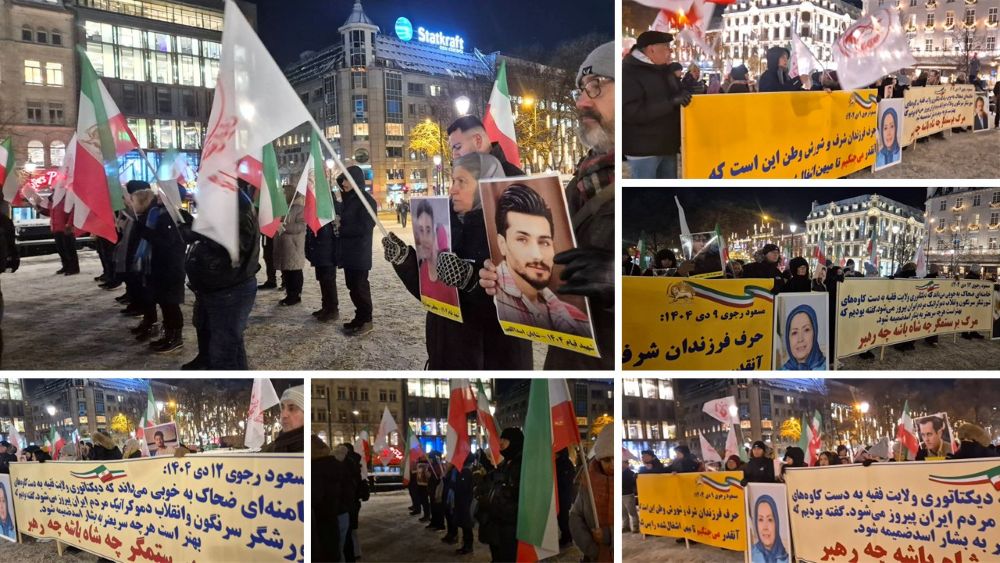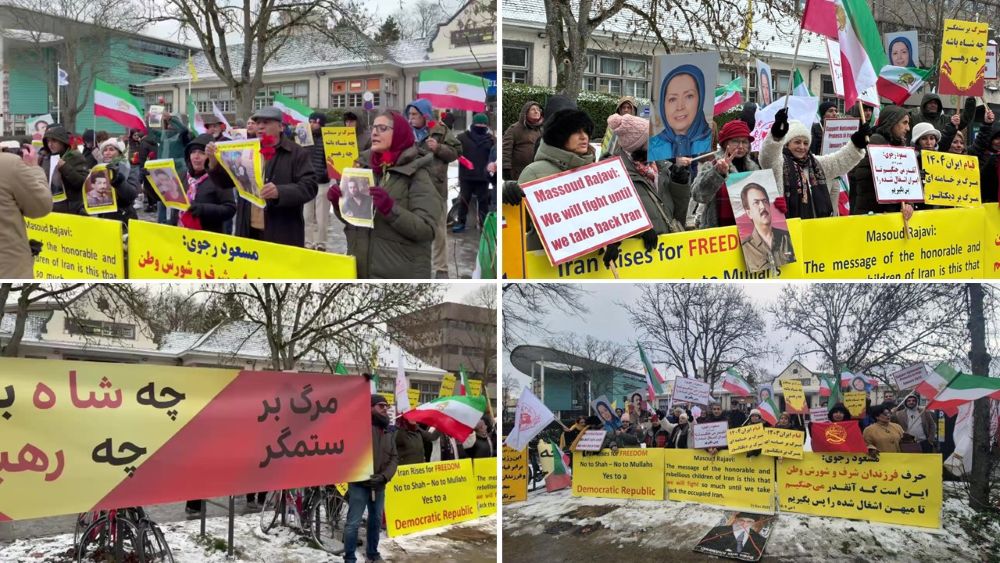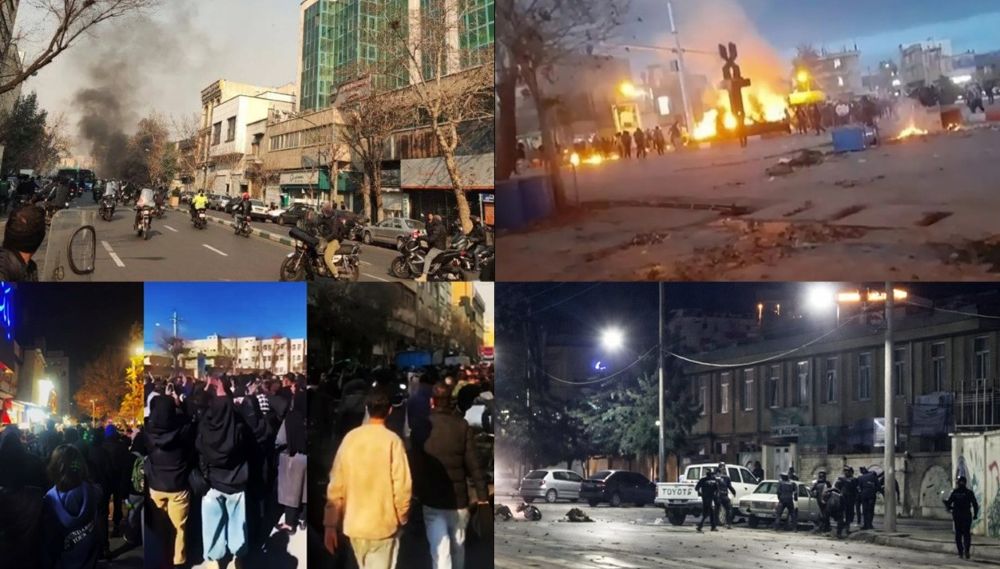Iran’s 1988 Massacre: Testimony by MEK/PMOI witness Majid Saheb-Jam, Ashraf 3, Albania, 15 July 2019
I salute dear Mrs. Rajavi, and welcome our distinguished guests
My name is Majid Saheb-Jam, I spent 17 years in prison. My crime was supporting
the MEK. I witnessed many human rights violations, tortures and violation of basic
human rights conventions in the Iranian prisons. In this short time, I would like to
refer to one the darkest eras in the 40-year rule of the religious fascism, which is
The Iranian regime committed this crime, it was a premeditated and well-planned,
they formed a death commission, with [Hossein Ali] Nayeri, who is now one of the
the massacre of the MEK prisoners in 1988 at the order of Khomeini.
regime’s top judiciary official, Ebrahim Raisi, current head of the Judiciary and
[Mostafa] Pour Mohammadi, a top judiciary official, and carried-out this crime.
Until today the regime has done everything to cover up this genocide, and refrains
from giving information on the victims’ whereabouts to their families.
During this massacre, after verifying the prisoner’s identity, the death commission
only asked one question that decided the prisoner’s fate. This conversation took
between 4 – 5 minutes. I’ll refer to some examples.
Massoud Naseri was paralyzed and was bedridden. The executioners took him to
the death commission; when they asked him of his charges he said, “I am supporter
of the MEK.” He was directly taken to the gallows and his paralyzed body was
hanged. Mohsen Mohammad Bagher, was an MEK supporter. He was paralyzed
from birth, therefore he played a role in a famous movie and was a well-known
person, but he was executed for persisting in supporting the MEK. He was executed
as a symbol of resistant artists, but with an iron leg and crutch.
Political prisoners were tortured during interrogations, and they suffered from severe physical and psychological consequences. The 1988 massacre was an opportunity for the regime to hide the evidence of its horrible crimes. Jafar Semsar-Zadeh and Iraj Mohammadi are two examples. Another heart-breaking catastrophe in this massacre was the story of families who lost at least two children. I know at least 20 families who had the same fate. For example, Hamid Khezri was executed days after his brother Asghar, because both declined to abandon the word Mojahed.
I now refer to those MEK members who were under the age of 18, sometimes 14 or 15. They spent years in the regime’s prison. The regime denies the execution of minors, but hundreds of these juveniles were massacred in 1988, such as Ardalan Dar-Afarin, Bagher Ghand-Harish, Reza Gholami and dozens of other juveniles who were hanged but refused to give up their cause.
In conclusion I would like to refer to another important point. During the massacre there were dozens of the MEK supporters who had served their sentences, but since they refused to renounce their connection to the MEK, and persisted in their cause, were executed during the 1988 massacre. I know the names of 70 of them, who stood until the end.
Yes, this is just a small part of the resistance of the Iranian people who gave their lives and stayed loyal to humanitarian causes, values and human dignity and now we convey their salutations to the selfless leaders of the MEK.
I salute dear Mrs. Rajavi, and welcome our distinguished guests
My name is Majid Saheb-Jam, I spent 17 years in prison. My crime was supporting the MEK. I witnessed many human rights violations, tortures and violation of basic human rights conventions in the Iranian prisons. In this short time, I would like to refer to one the darkest eras in the 40-year rule of the religious fascism, which is the massacre of the MEK prisoners in 1988 at the order of Khomeini.
The Iranian regime committed this crime, it was a premeditated and well-planned, they formed a death commission, with [Hossein Ali] Nayeri, who is now one of the regime’s top judiciary official, Ebrahim Raisi, current head of the Judiciary and [Mostafa] Pour Mohammadi, a top judiciary official, and carried-out this crime. Until today the regime has done everything to cover up this genocide, and refrains from giving information on the victims’ whereabouts to their families.
During this massacre, after verifying the prisoner’s identity, the death commission only asked one question that decided the prisoner’s fate. This conversation took between 4 – 5 minutes. I’ll refer to some examples.
Massoud Naseri was paralyzed and was bedridden. The executioners took him to the death commission; when they asked him of his charges he said, “I am supporter of the MEK.” He was directly taken to the gallows and his paralyzed body was hanged. Mohsen Mohammad Bagher, was an MEK supporter. He was paralyzed from birth, therefore he played a role in a famous movie and was a well-known person, but he was executed for persisting in supporting the MEK. He was executed as a symbol of resistant artists, but with an iron leg and crutch.
Political prisoners were tortured during interrogations, and they suffered from severe physical and psychological consequences. The 1988 massacre was an opportunity for the regime to hide the evidence of its horrible crimes. Jafar Semsar-Zadeh and Iraj Mohammadi are two examples. Another heart-breaking catastrophe in this massacre was the story of families who lost at least two children. I know at least 20 families who had the same fate. For example, Hamid Khezri was executed days after his brother Asghar, because both declined to abandon the word Mojahed.
I now refer to those MEK members who were under the age of 18, sometimes 14 or 15. They spent years in the regime’s prison. The regime denies the execution of minors, but hundreds of these juveniles were massacred in 1988, such as Ardalan Dar-Afarin, Bagher Ghand-Harish, Reza Gholami and dozens of other juveniles who were hanged but refused to give up their cause.
In conclusion I would like to refer to another important point. During the massacre there were dozens of the MEK supporters who had served their sentences, but since they refused to renounce their connection to the MEK, and persisted in their cause, were executed during the 1988 massacre. I know the names of 70 of them, who stood until the end.
Yes, this is just a small part of the resistance of the Iranian people who gave their lives and stayed loyal to humanitarian causes, values and human dignity and now we convey their salutations to the selfless leaders of the MEK.
I always loved to read a poem for Mrs. Rajavi, now I’ll read a poem. The poet was executed in the 1988 massacre. He spent years in prison and in 1987, since we thought he was about to be released we held a small celebration during which he read this poem that he wrote himself about the years he spent in prison. He didn’t know that I’ll read his poem 30 years after at your presence, this time for himself.
When the old witch spreads the seeds of death on the plains of our country
And imprisons pretty flowers because they have blossomed in the land of tyranny
I witnessed how the enchained flowers, in their secret meetings, where one can only see and hear with love and passion
I saw them sing that we will live
Because life is a cause and a struggle, so we will always live
He was hanged, and today, others continue his path because life is a cause and struggle
Hail to all of you. Hail to Mrs. Rajavi



